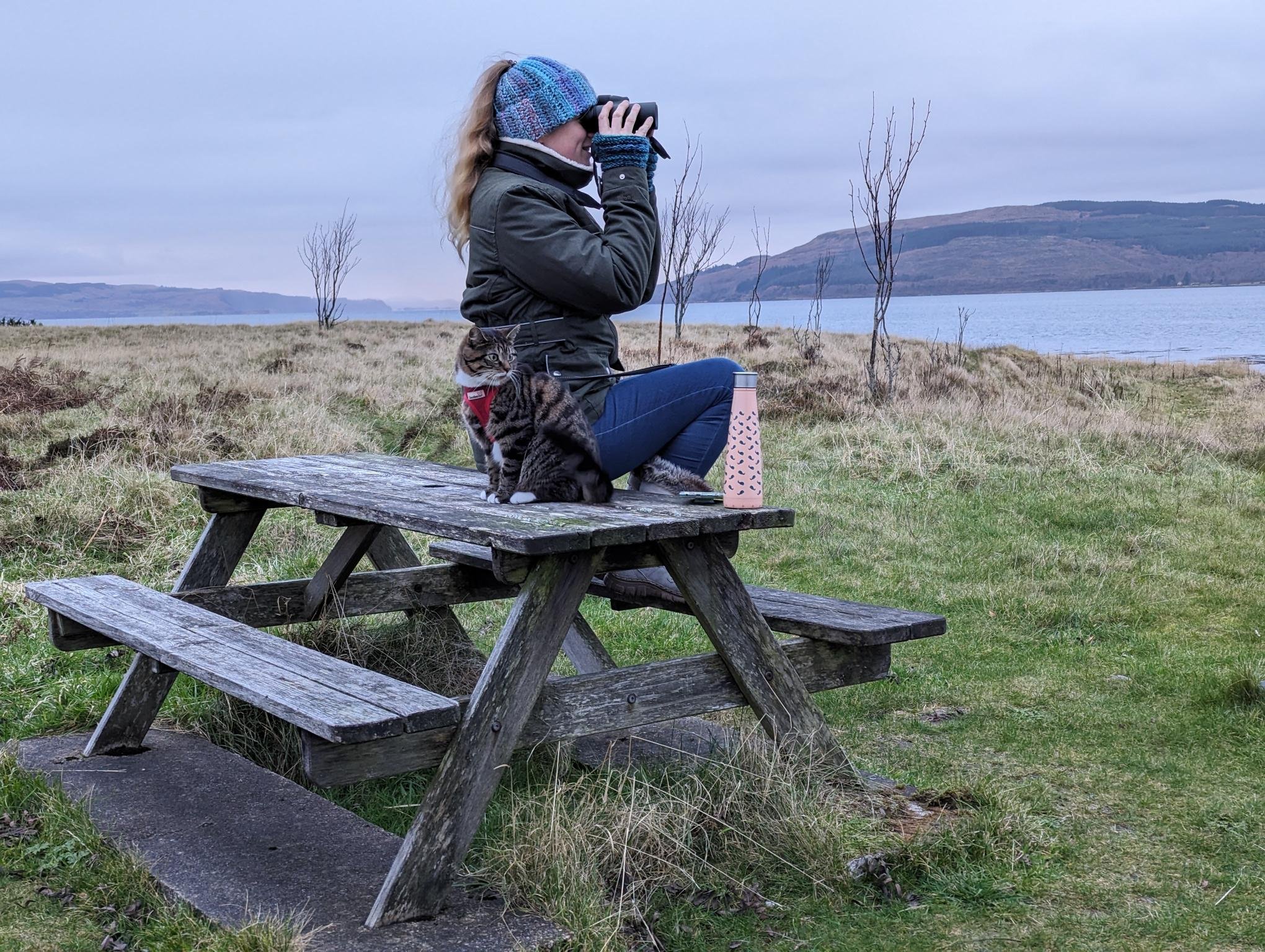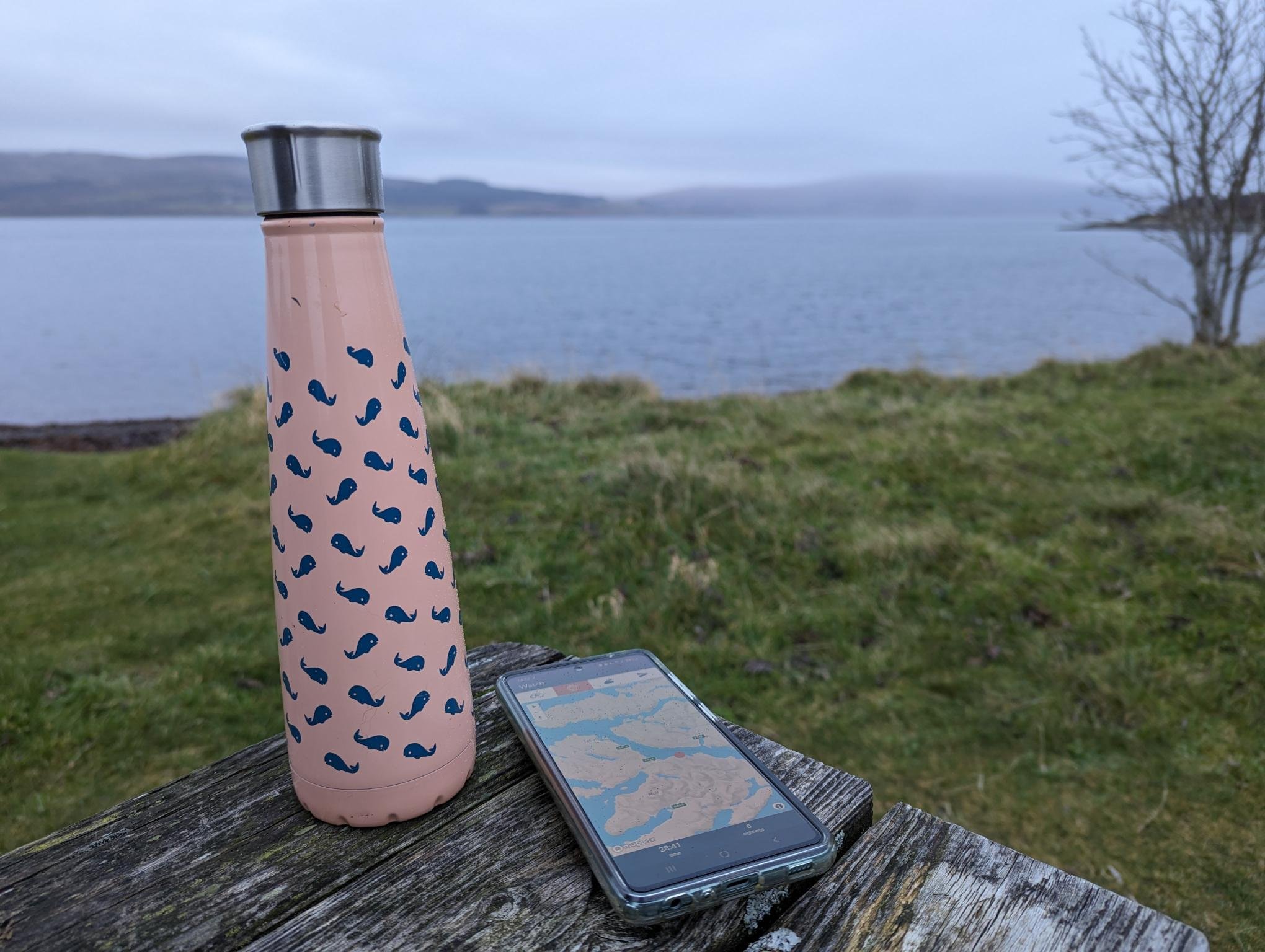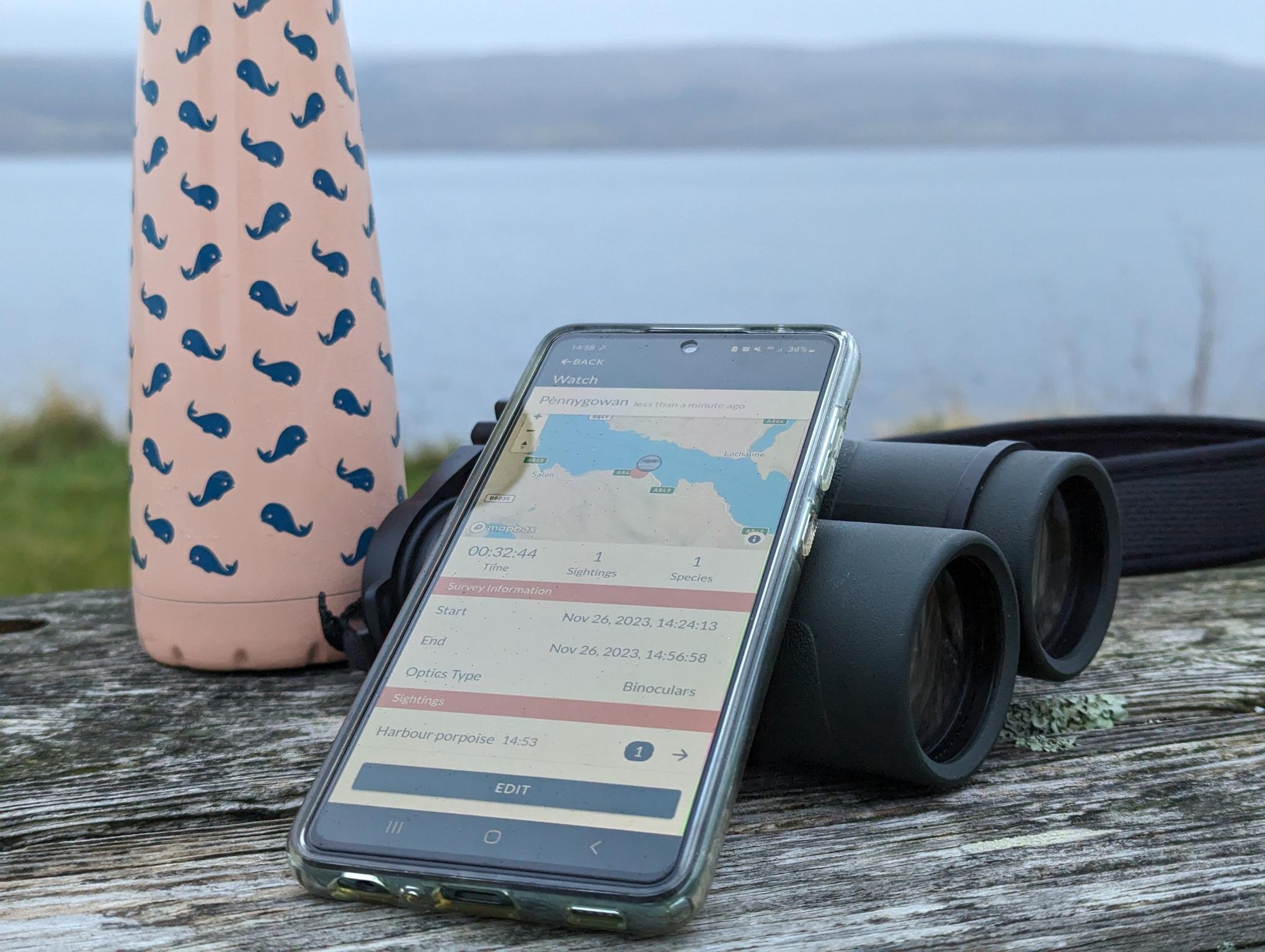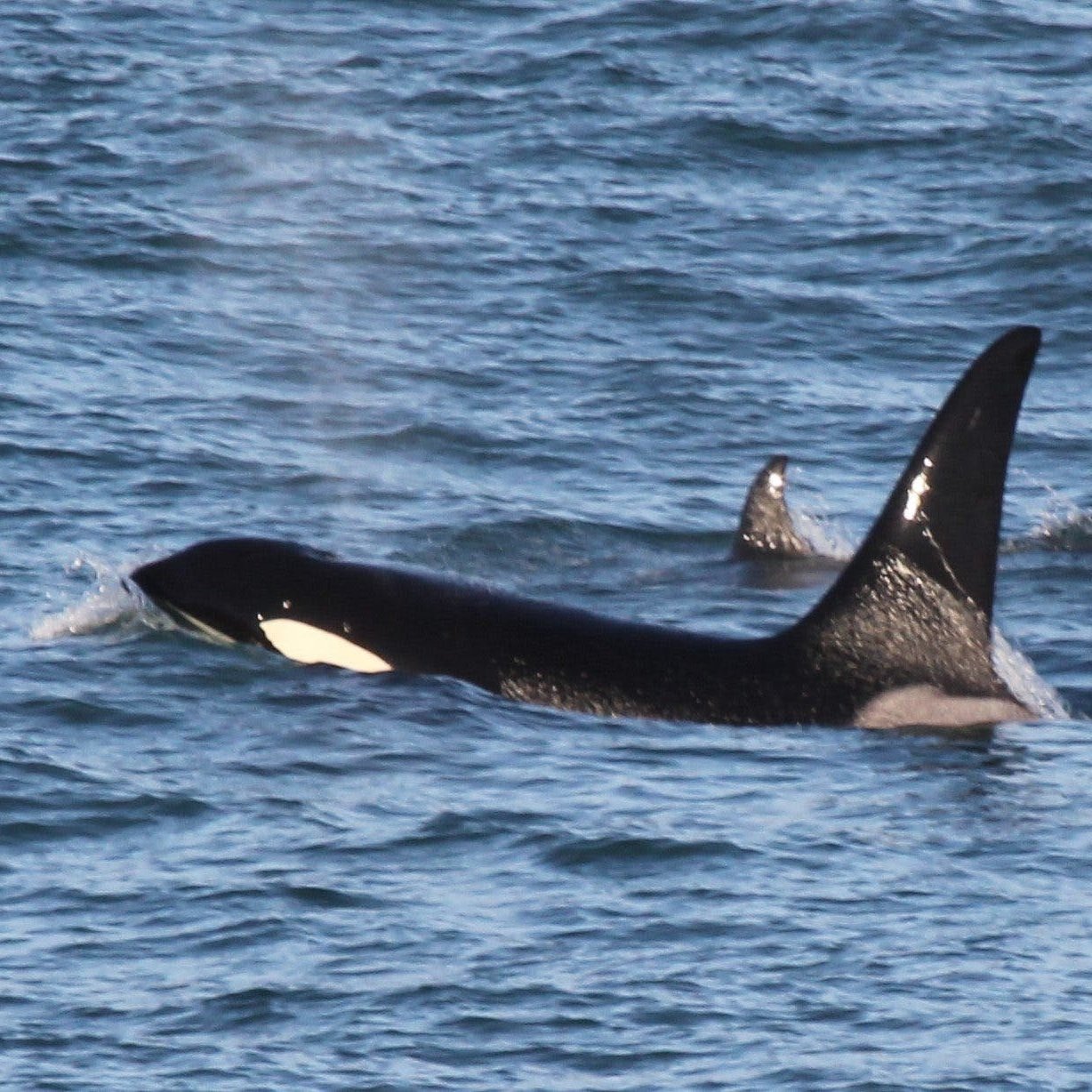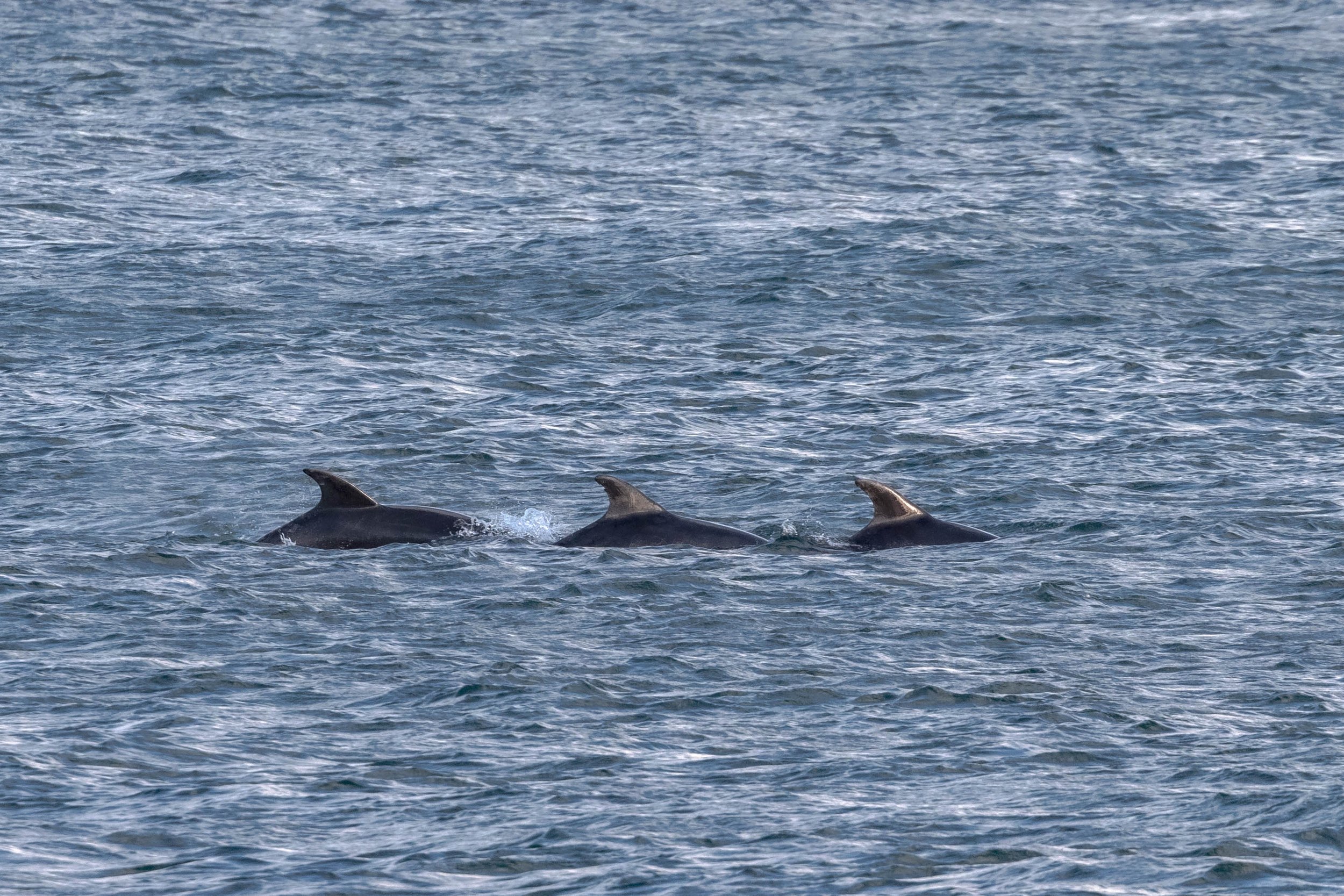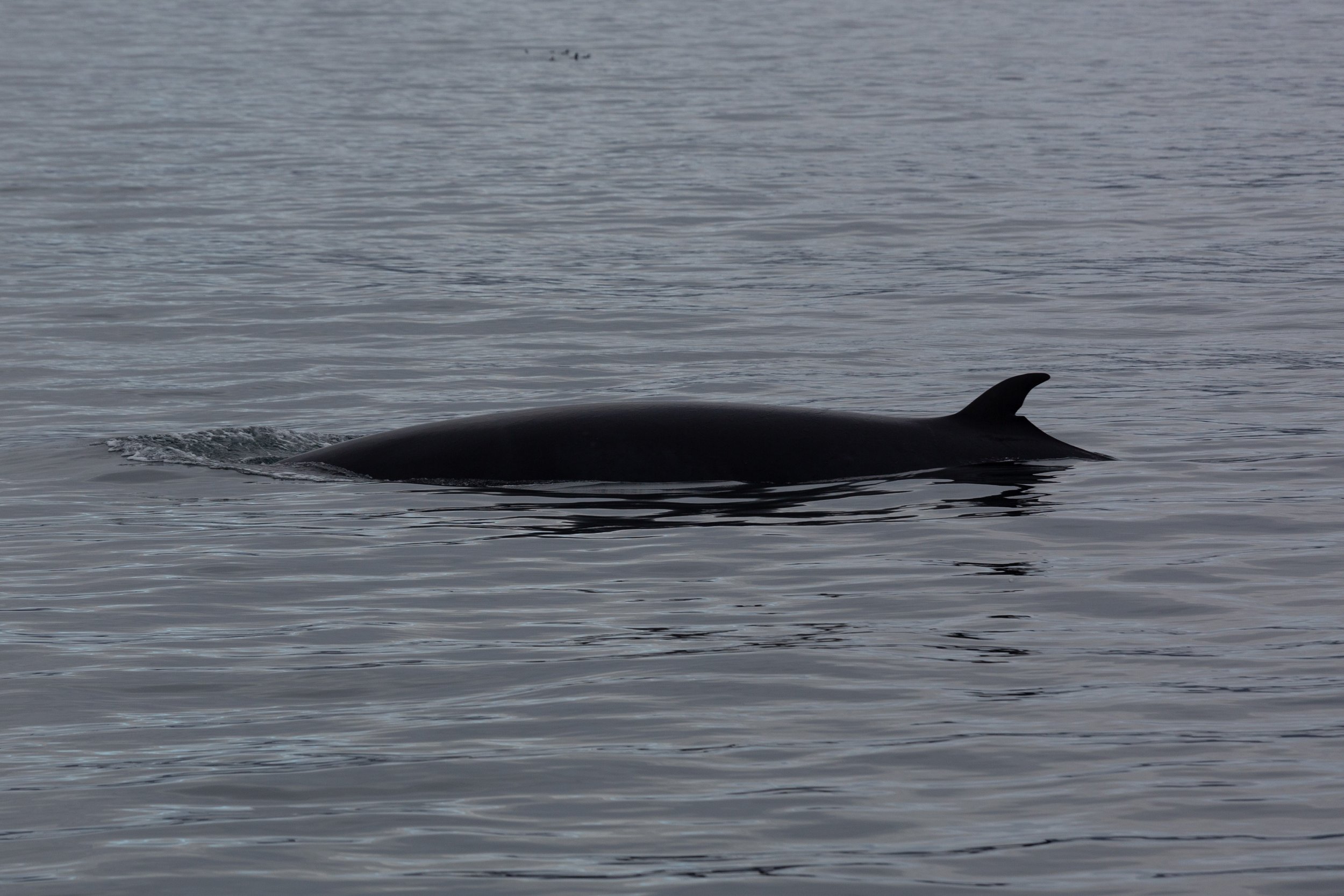The wonders of winter watching
#EmbraceYourWhaledSide
For many, summer is the obvious time for marine wildlife watching. As the nights draw in and the temperature drops, winter may not seem like the ideal time to watch the seas for a fin breaking the surface. But, winter is still an exciting and important time to keep your eyes on the water.
Our Education and Sightings Officer, Sadie, dives deeper into why winter watching is so important, encouraging everyone to don their raincoats and woolly hats and #EmbraceYourWhaledSide, dedicating some time to watch from land.
Although not everyone’s cup of tea, I love the exhilaration of spending time on a headland, looking out to sea, with the crisp gusts of wind pushing me to hunker down and just enjoy the wild nature of winter. Clad in layers of warm clothes, thermals, woolly hats and gloves, with a hot brew, and binoculars, where else would one want to be - other than inside by a nice warm fire, but that comes later.
Why not get a group of friends together for a winter walk and watch
Looking at past reports throughout winter on Whale Track proves winter is not as quiet a time for whales and dolphins as you might think. With sightings of harbour porpoise, common dolphins, bottlenose dolphins, Risso’s dolphins, minke whales, killer whales and even the surprise sighting of a walrus, to name just a few all reported during the previous two winters of 2022 and 2023.
Killer whale © Sue Envill, Bottlenose dolphins © Cally Sutherland, Minke whale © Gordon Bruce, Walrus © Lorne MacRae
But why is winter such an important time to watch for whales, dolphins and porpoises, surely the number of reports we get throughout summer is enough, right? Wrong!
We are always blown away by the number of reports our amazing Whale Track community send in throughout the spring and summer months, but our understanding of the cetaceans in our waters in winter is still limited as there isn’t as much data available for this time of year. This is due to there being fewer animals in our waters over the winter, poorer weather conditions and shorter days which make watching challenging. As a result, there are less eyes on the water, with a 74% drop in excursions and watches from land in the autumn and winter months, compared to spring and summer. A large percentage of our reports come from boat operators, so the drop in reports is understandable, but everyone can get involved to try to increase effort throughout winter. You can record an excursion from the ferry and we now also have the watch from land feature on Whale Track. Gathering effort-based data year-round is crucial in understanding the movements of seasonal and migratory species.
You may have noticed that we go on about effort-based data, well there’s an important reason for that. Effort-based data provides more scope for analysis. Casual sightings can give us an insight into things such as first and last sightings of species in a year, the distribution range as well as data on rarer species and the biodiversity found in our seas, but effort-based data can tell us so much more.
WHY IT’S WORTH PUTTING IN THE EFFORT
Recording your effort, such as distance travelled or time watching, even if you don’t always see anything, can be used to calculate the relative abundance and assess the population status of a species.
But what do we mean by relative abundance? This is basically how many animals are in a population, but as we can’t count all animals, we extrapolate it from the effort-corrected data, by calculating the encounter rate/density of animals, by dividing the number of animals by the distance travelled or the duration of the watch.
Knowing population abundance is perhaps the most fundamental aspect of understanding a species status – without estimating it, it’s difficult to understand trends and assess the impacts of different pressures on populations. So, it is crucial for making conservation and management-based decisions.
But there’s more that effort-based data can tell us. Effort-based sightings help to monitor species over a wide area and can help to understand side fidelity and identify important areas for key life stages such as feeding, breeding and calving. Over time it can also help us track trends, such as showing shifts in distribution and habitat use.
Tracking trends
For example, effort-based data collected from our research vessel, Silurian, has documented an increase in common dolphin sightings since 2003, with this trend evident across the whole of our west coast survey area, including now being seen as far north as the Butt of Lewis and Stoer Head, with occasional sightings west of the Outer Hebrides. You can learn more about this in our Marine Mammal Atlas.
Site fidelity
The information gathered through community sightings and photographs, has provided insight into the movements of individual minke whales and the frequency at which they return to their important feeding grounds in the Hebrides. Some individuals have returned every year for over a decade. Such as Knobble, first recorded in 2002, Knobble has been seen most years, returning to the Sea of the Hebrides, around July/August time, highlighting how important Hebridean Seas are for this species. You can learn more about the minke whales in the Hebrides in our Minke Whale Catalogue.
So even though it may not seem helpful to report a watch from land or excursion where nothing was seen, there is still a lot of information we can garner from this effort. Knowing when and where animals aren’t is just as important as knowing when and where they are, especially when combined with the comparisons which can be made between the different seasons throughout the year.
So, this winter, #EmbraceYourWhaledSide and dedicate some time to watch from land. You never know what you might see.
Then enjoy that nice warm fire I mentioned.
We would love to see your winter watch photographs.
Share them with us by tagging #EmbraceYourWhaledSide and @HWDT on Facebook or @hwdt_org on Instagram.


